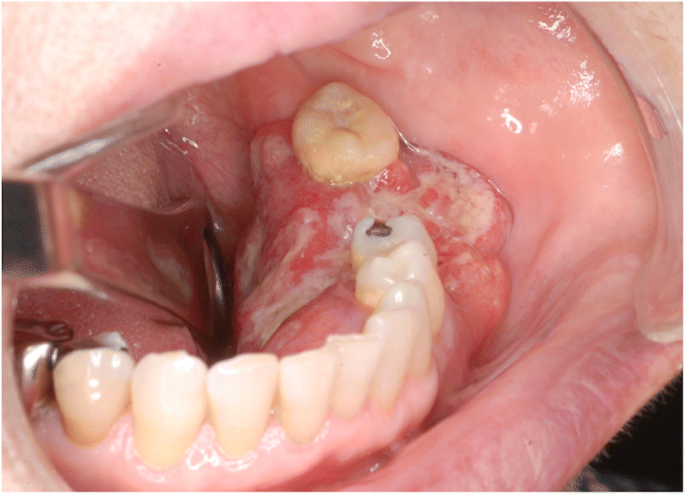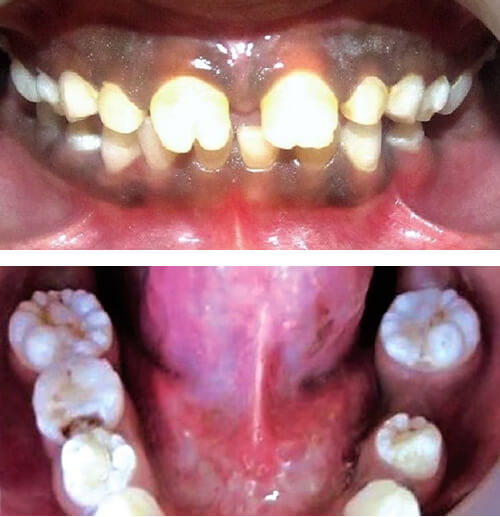A small, elevated lesion less than 1 cm in diameter that contains serous fluid
vesicle
Pathologic wearing away of tooth structure by a repetitive mechanical habit
Overgrowth of the yeast-like fungus Candida Albicans in babies
Thrush
the developmental abnormality that is characterized by one or more teeth that are smaller than normal
microdontia
The term used to describe a non malignant tumor with favorable recovery
benign
A flat area that does not protrude above the surface of the normal tissue and is different in color than the surrounding tissue
macule
Accumulation of blood within tissue as a result of trauma
Hematoma
solitary or clusters of fluid filled vessicle that last between 7-10 days and reoccur for various reasons, including: trauma, allergy, stress, etc.
herpes simplex
When the medial nasal process fails to fuse with the lateral portions of the maxillary process, it results in this labial abnormality
cleft lip
A benign tumor with a cauliflower-like appearance that is attached to the palate by a stalk
Papilloma
A lesion that is attached by a stemlike or stalk base similar to that of a mushroom
Pedunculated
 the benign lesion of the hard palate seen here
the benign lesion of the hard palate seen here
nicotine stomatitis
also known as a wart, this viral infection is treated by a conservative surgical excision
verruca vulgaris
Also called a "tongue tie", it is a condition characterized by adhesion of the lingual frenum to the floor of the mouth or lingual gingiva
ankyloglossia
the most common malignancy of the oral cavity, as seen below:

squamous cell carcinoma
The portion of the diagnostic process that consists of blood tests, urinalysis, and laboratory cultures
Laboratory Diagnosis

as seen above, a tumor filled with granulation tissue that is often seen in pregnant women
pyogenic granuloma
a bacterial infection seen after tooth extraction or abrasion of the mucosa that forms abscesses and sulfur granules
Actinomycosis
The developmental abnormality characterized by two teeth being joined at the cementum
concrescence
This accounts for 90% of all benign salivary gland tumors
Pleomorphic Adenoma
A benign condition of unknown origin consisting of a smooth, beefy red patch on the midline of the tongue
Median Rhomboid Glossitis
A chronic autoimmune disease that causes oral ulcers, genital ulcers, and ocular inflammation
Behcet syndrome
The two dental conditions typically associated with congenital syphilis as seen below:
Hutchinson's incisors and Mulberry molars
The most common developmental cyst of the jaw, it forms around the crown of an unerupted or developing tooth
dentigerous cyst
a tumor composed of enamel, dentin, cementum, and pulp tissue that appears as a cluster of small "teeth like calcifications" radiographically